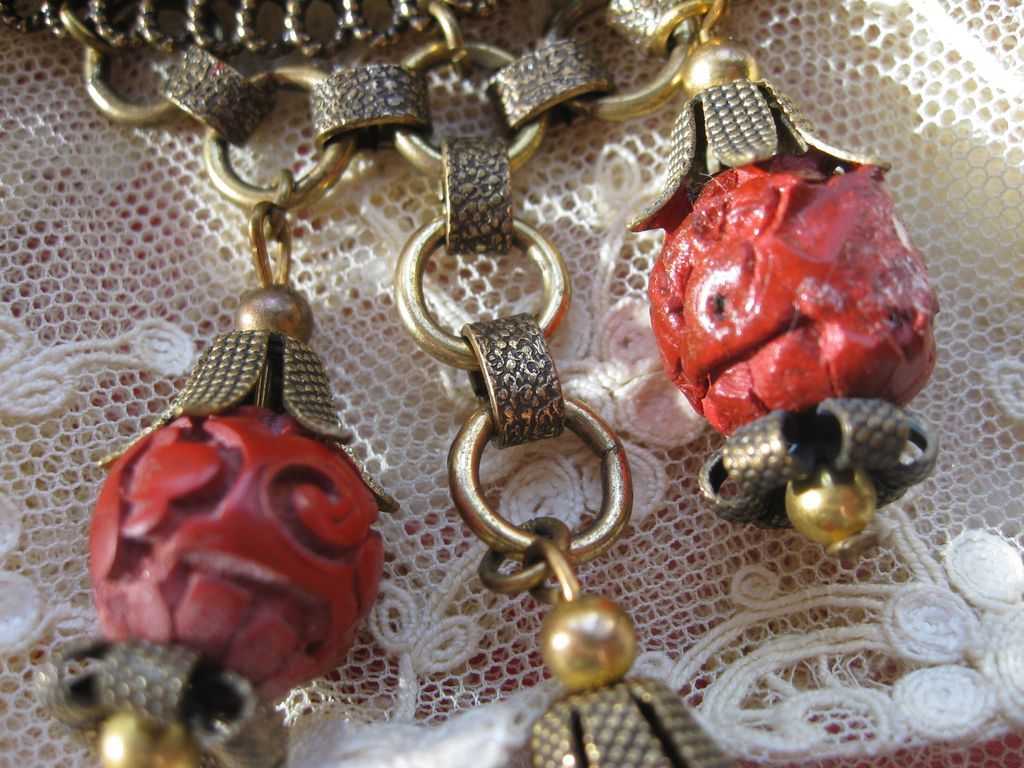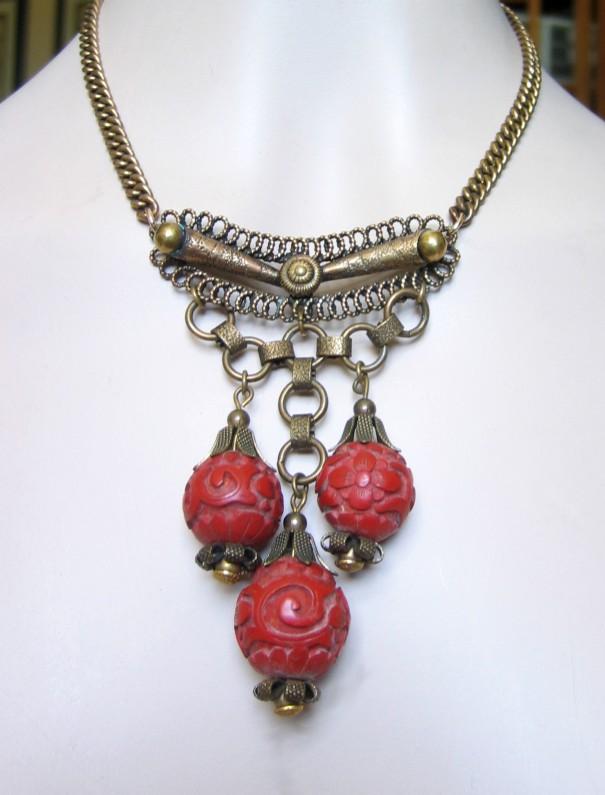| Not sure it's such a straight line | |||||
| Re: My take-away re. cinnabar of 2nd-4th quarters of 20th century -- jrj | Post Reply | Edit | Forum | Where am I? | |
04/19/2015, 09:18:26
1) Lacquer from a certain tree-sap, long tradition of use, specialty of a Beijing workshop that nearly died out during the turmoil in the early part of the century, then was revived with government sponsorship in the 1950s and is now once again nearly moribund. Seems to have a hard and smooth surface. Can crack with age, or as the underlying wood or paper or bamboo or whatever dries and cracks.
2) Some other sort of resin - or resins, plural - in the Yangzhou workshops. This is the stuff I suspect resembles sealing wax. Apparently also an old traditional industry. Can it be applied in layers, too? Yes - black and red seems to be a favorite combination. Also shows up in green, yellow, and turquoise. Can be carved. Applied over a metal or wood base.
3) Some sort of moldable waxy-looking resin. Not sure when this got started - 1970s? earlier? Has obvious seams. Again, a type of sealing wax?
4) Plastic - definitely post-1970s. Requires a considerable support industry to produce the raw industrial resins - one cannot simply scrape up insect residue, boil down pine wood shavings, and melt up a batch in a pot.
The beads from the 1930s that show up in costume jewelry manufactured in the east coast of the US seem to be susceptible to melting or disintegration with slight heat. One source suggested "putty" (linseed oil and chalk, dries out and cracks with age), but some sort of Yangzhou resin seems more likely. I have a couple of mushy-looking specimens on Haskell-style jewelry, but am not sure what to do to actually identify the stuff.
If you do a Google Images search for "Gray Kingsburg" you can find several examples of the 1930s style cinnabar beads. They appear to be layered and carved, but meltable.


|